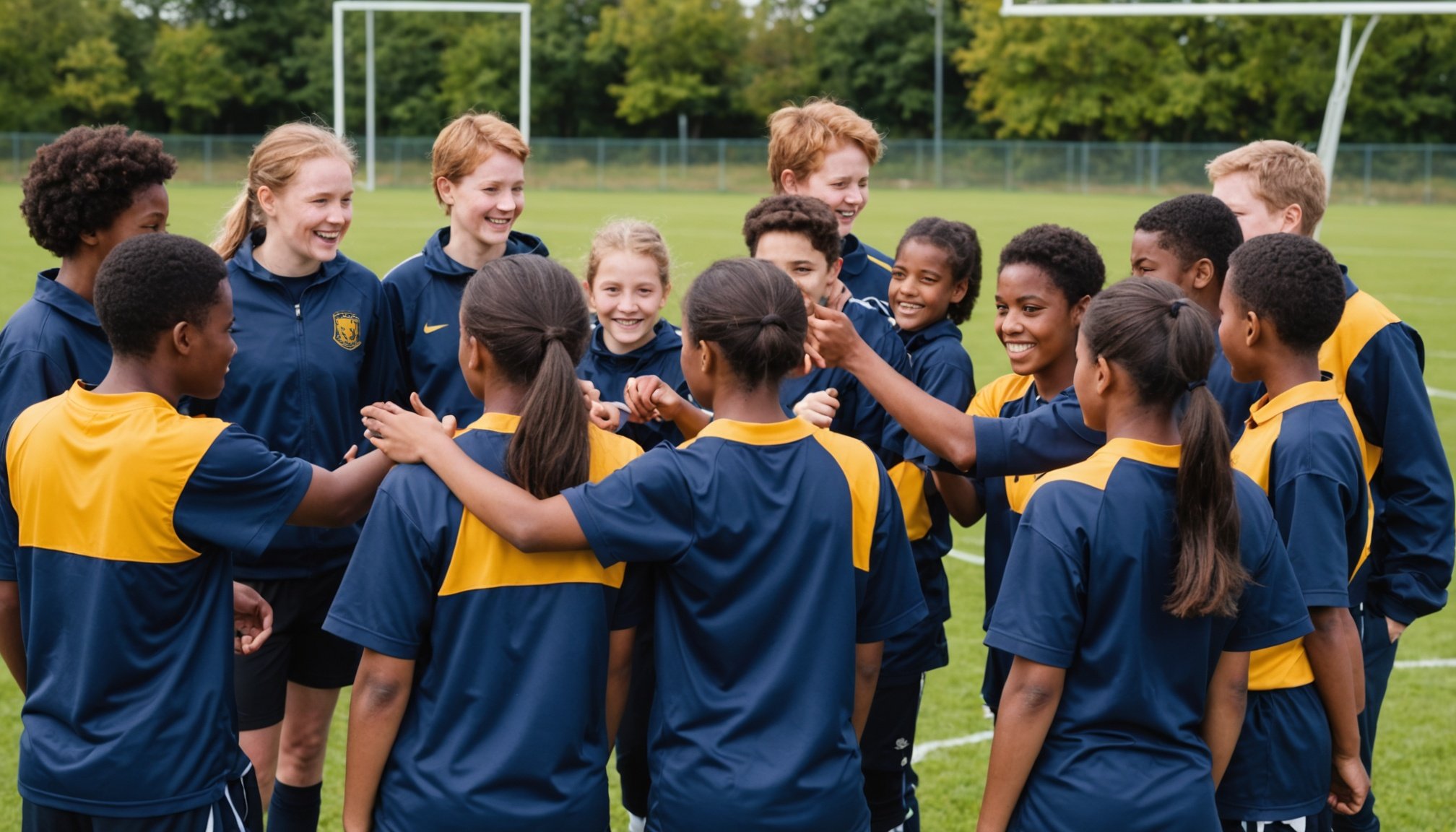Importance of Diversity and Inclusion in School Sports
Ensuring diversity in school sports is pivotal for fostering a dynamic and welcoming environment. This inclusiveness not only enhances the personal development of students but strengthens community cohesion. Currently, many secondary schools in the UK place emphasis on traditional sports, which might inadvertently marginalize certain groups. By implementing robust inclusion strategies, schools can offer a broader range of activities that cater to diverse interests and abilities.
The benefits of diverse representation in sports are numerous. Students develop essential life skills such as teamwork, empathy, and communication through interactions with peers from varied backgrounds. A culturally and ethnically rich sports environment also reflects societal structures, preparing students for real-world interactions. Schools that embrace diversity enable all students to pursue their passions and achieve personal milestones.
This might interest you : Boosting Rowing Crew Bonding: Proven Strategies for Stronger Team Cohesion in UK Clubs
In the long term, inclusive practices contribute significantly to a positive school culture. Students are more likely to feel valued and respected, which can lead to improved academic performance and reduced dropout rates. Additionally, having a strong diversity ethos instilled in early education promotes lifelong appreciation and understanding of multiculturalism. Through strategic inclusivity measures, schools lay the groundwork for a harmonious and equitable future for all students.
Current Barriers to Inclusion in School Sports
Despite its importance, barriers to inclusion persist in school sports, limiting participation for some students. Key challenges faced by underrepresented groups often stem from both institutional and systemic barriers. These can manifest as limited access to resources, lack of representation, or insufficient awareness among school staff. For instance, financial limitations may prevent schools from offering a wide array of sports activities, disproportionately affecting diverse student groups.
Have you seen this : Maximize your triathlon success: essential training tips for uk athletes to balance swimming, cycling, and running for optimal race day results
Institutional barriers include inflexible sports curricula that do not accommodate a broad range of abilities or cultural preferences. This can lead to a lack of interest or inability to engage with available sports. Systemic barriers often involve entrenched gender stereotypes or socio-economic divides, further marginalizing students who do not conform to mainstream norms.
Educators and coaches provide valuable insights into experiential barriers impacting sports diversity. They often highlight issues such as inadequate inclusivity training and minimal focus on equity issues within sports programming. These challenges underscore the need for proactive measures to dismantle systemic obstacles and foster an environment where every student can thrive, regardless of their background. Addressing these barriers is crucial to achieving meaningful diversity in school sports, ensuring equitable access for all participants.
Innovative Strategies for Fostering Inclusion
Implementing innovative approaches is crucial for enhancing diversity in school sports. Tailored training programs for coaches are a vital component of this effort. These programs provide coaches with the skills necessary to address and dismantle barriers to inclusion. By offering specialized training, coaches learn to recognize and accommodate diverse needs, promoting a more inclusive sports environment.
Curriculum Integration for Sports Diversity
Incorporating diversity strategies within existing sports curricula ensures that inclusivity is not an afterthought but a central focus. Schools can design curricula that reflect diverse cultural preferences and are adaptive to different abilities. This integration normalizes varied representation within school sports and encourages students from all backgrounds to participate.
Peer Mentorship Initiatives
Peer mentorship initiatives play a significant role in encouraging participation across diverse groups. By fostering an environment where students support and motivate one another, these initiatives build a sense of belonging among teammates. Peer mentors serve as role models, demonstrating the tangible benefits of inclusion and helping to break down social barriers.
These best practices highlight the potential for schools to enhance student engagement and promote inclusivity by embracing diverse representation. Schools that adopt these strategies not only enrich their sports programs but also contribute to the holistic development of their students.
Case Studies of Successful Programs
Delving into case studies from UK schools reveals the positive outcomes of successful initiatives in promoting diversity in school sports. Notable examples illustrate how diverse representation in sports programming can be achieved. One exemplary initiative is the introduction of culturally diverse sports like cricket and netball at a secondary school in London. This inclusion appealed to a broader student demographic.
Metrics of Success
These initiatives boast impressive metrics of success, including increased participation rates across varied student groups. Surveys and community feedback indicate heightened student satisfaction and feelings of belonging. Such programs highlight the tangible benefits for students and the wider school community.
Program Scalability and Replicability
Additionally, analyzing the scalability of these programs is crucial for broader implementation. Successful schools have often designed their programs to be adaptable across different educational contexts, considering local cultural and socio-economic factors. Schools should evaluate how these models may be replicated and adjusted for their unique settings.
Case studies underscore the importance of proactive and inclusive policies in fostering a positive school culture. Through tailored programs, schools can create environments that celebrate diversity and open doors to holistic growth for students, setting a precedent for comprehensive sports inclusivity.
Engaging the Community and Stakeholders
Building meaningful community engagement and fostering strong stakeholder involvement are essential for enhancing diversity in school sports. Schools can form valuable partnerships with local organizations and families to expand resources and support. These relationships help bridge cultural and socio-economic divides, ensuring all students have equal opportunities to participate.
Including students in the planning process is a key strategy for fostering ownership and interest in the programs offered. Students bring fresh perspectives and ideas, making sports initiatives more appealing to their peers. Their involvement also encourages schools to align activities with the interests and needs of the student body, promoting higher levels of participation.
Successful partnerships demonstrate how collaboration can enhance school sports diversity. For instance, working with local sports clubs or community centers can provide access to specialized facilities and coaching expertise. These collaborations often result in enriched programs that cater to diverse interests and skills.
Furthermore, local stakeholders, such as businesses and non-profits, can offer sponsorships or grants to support inclusive programs. By actively engaging the community and involving various stakeholders, schools create a robust network that sustains and expands opportunities for all students to thrive in sports settings.
Recommendations for Long-Term Sustainable Change
Developing long-term strategies to improve diversity in school sports requires ongoing efforts and thoughtful policy recommendations. A comprehensive approach is essential for fostering a sustainable change that ensures equitable access and representation. Policies must be tailored to continually promote diversity initiatives, integrating them as a core component of the educational framework.
Firstly, establishing dedicated diversity coordinators within schools can monitor and guide efforts towards inclusivity. This helps in maintaining consistent implementation of inclusion strategies. Continuous assessment and adaptation are crucial, ensuring these policies remain responsive to evolving needs. Schools should regularly evaluate the effectiveness of their programs based on participation rates and feedback from students and stakeholders.
Encouraging a culture of accountability is paramount. Educators and administrators should lead by example, fostering an environment where every student’s voice is heard and valued. This can be achieved by organizing workshops and training sessions that focus on diversity and inclusion ethics. Additionally, policies should emphasize the importance of collaborative efforts. Involving local organizations and community members can provide the necessary resources and insights for these initiatives to thrive.
Ultimately, long-term sustainable change hinges on schools adopting a forward-thinking mindset, ensuring all students benefit from a diverse and inclusive sports program.











